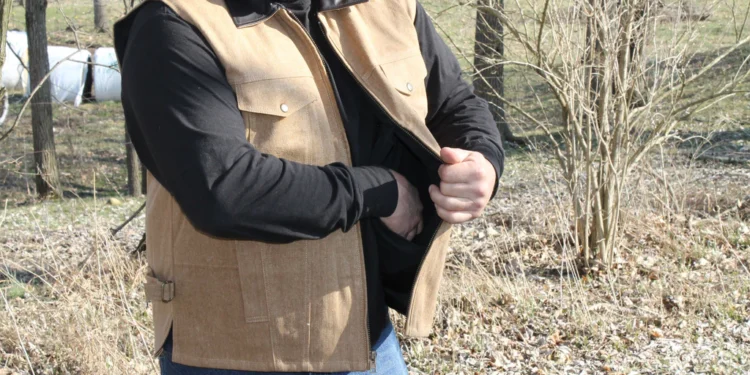Last Updated on April 13, 2024 by Flavia Calina
Selecting the right concealed carry vest can be a crucial decision for those looking to exercise their right to bear arms responsibly or seek a practical personal protection method. The vest needs to be comfortable for everyday wear yet reliable and accessible in situations that necessitate the use of a concealed firearm. Here are five key factors you should consider when choosing a concealed carry vest to find an option that best suits your lifestyle and needs.
Material and Durability
The material of concealed carry vests is a matter of comfort but also of functionality and durability. The fabric should be robust enough to support the weight of a firearm without sagging or wearing thin over time. Typical materials include heavy-duty cotton, polyester blends, or advanced synthetics that balance toughness and comfort. Additionally, the material should suit various climates; ventilated fabrics for warmer environments and thicker materials for more excellent areas are considerations to weigh.
Durability is also closely tied to maintenance. Select a material that is easy to care for and can withstand regular washing without degradation, especially if you plan on wearing the vest frequently. It’s also practical to look for vests that have reinforced areas around pockets and seams, as these will be under the most stress due to the weight and movement of the concealed weapon.
Fit and Comfort
A vest that fits poorly won’t just be uncomfortable; it may also hinder accessibility to your firearm in a time-critical situation. The vest should fit snugly but not be so tight that it restricts movement. Consider trying on different sizes with your firearm and holster to ensure that the vest can accommodate them without printing — the telltale outline of a gun visible through clothing. Besides the correct size, look for vests designed with adjustable straps or side panels that can provide a more custom fit.
Comfort extends beyond fit and includes the wear ability of the vest over extended periods. Padded shoulders can help distribute weight more evenly, preventing shoulder fatigue. Moreover, a breathable lining is beneficial to avoid overheating, especially when worn directly against the skin or over another layer of clothing.
Accessibility and Drawing Ease
How quickly and easily you can access your firearm is arguably the most critical aspect of a concealed carry vest. The design should allow for a fluid, swift draw without excessive fumbling. Pocket placement is essential here; they should ideally be located in a natural resting place for your hands, enabling a smooth draw motion. Look for vests with ambidextrous options if you are proficient with both hands or practice off-hand shooting.
Additionally, the closures on the pockets or compartments should facilitate a quick opening, with options like magnetic snaps or Velcro superior to buttons or zippers for speed. At the same time, they must be secure enough to ensure the firearm doesn’t become dislodged during daily activities.
Storage Capacity and Concealment
A good concealed carry vest should offer ample storage for your firearm, ammunition, and other essentials like identification, a cell phone, or a flashlight. Multiple pockets help distribute the weight around the vest, making it feel lighter and more balanced. Furthermore, the design should facilitate concealment, keeping the gun and any bulges out of sight without looking bulky or out of place.
When assessing storage, consider the types of items you typically carry along with your firearm. You want to ensure space there’s everything without overcrowding the vest, which may hinder your ability to draw your weapon quickly.
Adaptability to Different Attires and Situations
The versatility of a concealed carry vest is also significant. It should complement a range of attire, from casual to more formal, extending its usability across various scenarios. Whether you are heading to the woods for a hike, running errands in town, or attending a social event, the vest should adapt seamlessly to different settings.
Additionally, a well-designed vest should offer modularity that allows for the holster and pockets to be adjusted or removed depending on the situation or personal preference. This adaptability ensures that the vest remains a practical part of your everyday carry, regardless of the day’s needs or environment.
In conclusion, choosing the ideal concealed carry vest involves balancing material choice, fit, accessibility, storage, and adaptability. Each factor plays into creating a functional, comfortable, and versatile garment that upholds the standards of safety and preparedness. Always remember to handle firearms carefully, understand the responsibility of carrying a concealed weapon, and train regularly to ensure proficiency and safety in its use. Read more exciting articles on Today World Info









